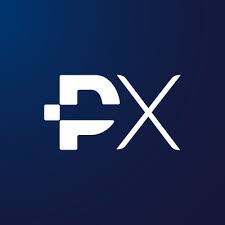Understanding Limit vs Market Order Fees What Every Trader Should Know

Limit vs Market Order Fees: A Comprehensive Guide
When it comes to trading in the financial markets, understanding the different types of orders and their associated fees is crucial for maximizing profitability. Two of the most common order types are limit orders and market orders. Each has its distinct characteristics, benefits, and potential costs. In this article, we will dive deep into the differences between limit and market order fees and how these can affect your overall trading experience. For more on managing risks while trading, you can refer to limit vs market order fees primexbt PrimeXBT risk management.
What Are Limit Orders?
A limit order is an order to buy or sell a security at a specific price or better. For buying, a limit order will only execute at the specified limit price or lower, while for selling, it will only execute at the limit price or higher. This type of order gives traders more control over the prices at which they enter or exit a position.
Advantages of Limit Orders
One of the primary advantages of limit orders is that they allow traders to set a price that aligns with their strategy and risk tolerance. By specifying the maximum price you are willing to pay or the minimum price you are ready to accept for selling, you can avoid unfavorable market conditions. Additionally, limit orders can help in managing emotions during trading by removing the pressure of making snap decisions in volatile markets.
Potential Fees Associated with Limit Orders
While limit orders provide valuable control, they may also incur fees, depending on the trading platform. Many brokers charge a commission on trades regardless of the order type. It’s crucial for traders to understand that some platforms might have different fee structures that can affect limit orders, such as:
- Commission Fees: These are charges applied per transaction, whether you’re placing a limit or market order.
- Slippage Costs: Although limit orders aim to mitigate slippage, there may be scenarios where slippage can still occur, affecting the final price of the executed order.
- Inactivity Fees: Some brokers may impose fees if you do not execute trades for a certain period, which may also apply regardless of order types.
What Are Market Orders?
Market orders, on the other hand, are executed immediately at the current market price. Traders utilize market orders when they want to ensure the execution of a trade promptly without concern for the price. This order type is generally used in situations where speed is more critical than price.
Advantages of Market Orders
The key benefit of market orders is that they guarantee execution. In highly volatile markets where prices can change rapidly, placing a market order can mean the difference between entering a position or missing an opportunity. Market orders are straightforward and commonly used by traders who prioritize having their transactions completed swiftly.
Potential Fees Associated with Market Orders
Despite their advantages, market orders can also come with their own set of fees, which can sometimes be higher than those associated with limit orders:
- Commission Fees: As with limit orders, market orders may incur commission charges based on the broker’s fee schedule.
- Market Impact Costs: A market order can cause the price to move adversely if the market is not liquid enough, leading to higher effective costs.
- Slippage: Given that market orders execute at the best available price, they can suffer from slippage, particularly in fast-moving markets, increasing trading costs.
Comparing Fees: Limit vs Market Orders
When deciding whether to use limit or market orders, traders should evaluate the fees associated with each type, as these can significantly affect trading profitability. Although limit orders offer the benefit of executing at a specified price, the commission fees applied will determine their overall cost-efficiency. Conversely, market orders guarantee immediate execution but can lead to higher costs due to slippage and market impact.
Which Is More Cost-Effective?
The cost-effectiveness of each order type will depend on various factors such as market conditions, trading strategy, and the fee structure of the broker used. Active traders who frequently engage in high-volume trading might prefer limit orders to minimize their overall costs over time. On the other hand, those prioritizing execution speed, such as day traders or scalpers, may opt for market orders despite the potential for higher fees.
Strategizing Around Order Fees
To effectively manage trading costs, traders should develop a strategy that aligns with their trading style and risk management approach. Here are some strategies to consider:
- Evaluate Broker Fees: Always assess the fee structure of your brokerage to understand how commission fees impact your order choices.
- Monitor Market Conditions: Being aware of market volatility can guide you in choosing between limit and market orders effectively.
- Position Sizing: Properly sizing your position can mitigate the impact of fees on your overall profitability.
- Order Timing: Consider using limit orders during less volatile times and market orders during intense market movements.
Conclusion
Understanding the difference between limit and market order fees is essential for any trader. While both order types have their advantages and disadvantages, the choice largely depends on individual trading strategies and market conditions. By evaluating the fees associated with each type of order and developing a solid trading strategy, traders can enhance their trading performance and profitability. Remember, effective risk management and awareness of costs can set the foundation for successful trading outcomes.
